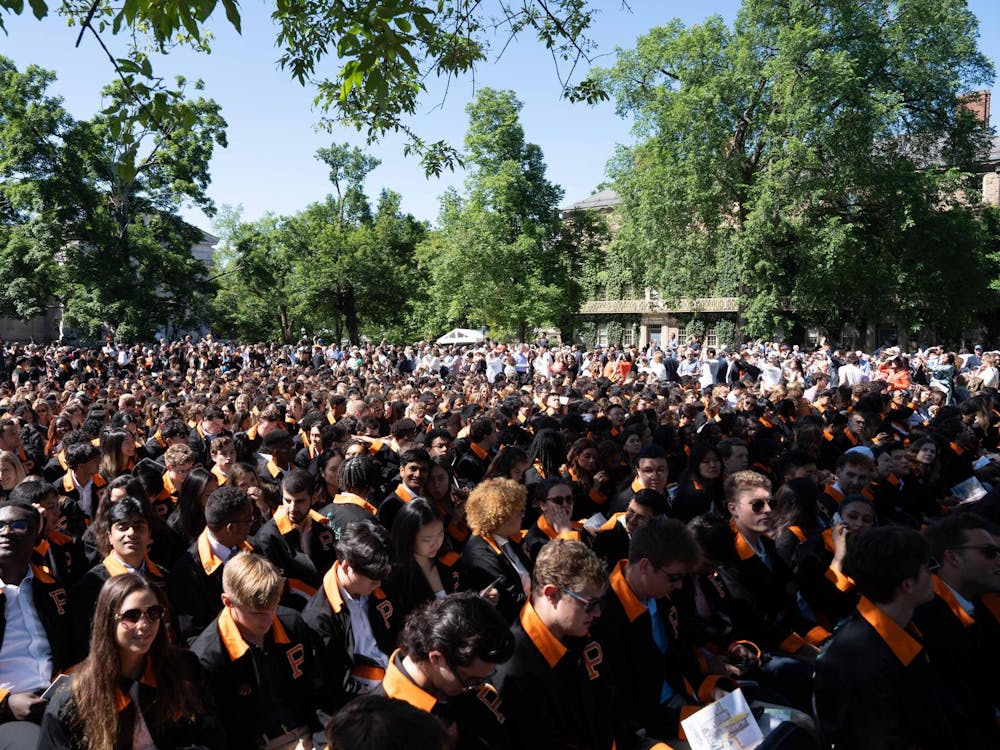One of the first emails I received from my residential college adviser upon my matriculation to the University was a list of the bathroom codes for Holder Hall—bathroom codes that I would never need to use myself but was only given so that I could be a resource to visiting female friends. As a male, I do not need to type in a four-digit access code to use my restroom like my female counterparts; unlike those outside the women’s restrooms, the keypads installed outside the doors of the men’s restrooms within Princeton, although present, are entirely for show. Anyone who has lived in one of the University’s dormitories has noticed this phenomenon, and my search through the annals of The Daily Princetonian revealed that I am not the first student to comment on it in my column. Where my dispute with this bathroom bias differs from my predecessors, however, is that while their main concern is the archaic view of females as delicate and helpless that this policy tolerates, mine is the ideals of “American” masculinity that the bathroom code discrepancy upholds.
Whether consciously or not, Princeton’s discriminatory distribution of bathroom codes has institutionalized a damaging dichotomy of gender norms at the University. As I have pointed out, the feminine side of this argument has been previously discussed by this publication — once in 2011 by Luke Massa ’13 and once more in 2012 by Rebecca Kreutter. What has been left unaddressed is that by placing codes on women’s bathrooms while neglecting them on men’s has sustained the damaging belief that men cannot be victims of sexual assault. The codes were originally introduced to the University in 1978 (according to Luke Massa’s column) to protect recently admitted females from sexual assault and have endured since even with the installment of the prox system. It is unsurprising that University administrators were primarily concerned with the safety of their female population — men are dominant, men are masculine and men cannot be sexually harassed. At least, that’s what the preservation of these gendered safety measures would imply.
But even if the University's bathroom code policy suggests that males are safe from sexual predation, the Rape, Abuse & Incest National Network estimates that at least 10 percent of victims of sexual assault are male. And even this statistic is, unfortunately, most likely low; the prejudice implied by University bathroom codes is simply a symptom of a larger, national stigma that causes men who experience sexual abuse of any kind to feel “feminized” and ashamed, reducing the number of incidents officially reported. Americans’ association of sexual assault with the female gender causes serious psychological repercussions and cultural stigmatization for our men who are victims. Inundated with the perception that “men don’t get raped,” male victims are likely to question their own masculinity or sexuality and to feel humiliated and responsible for their assault and for not being “manly” enough to combat the attack. The University’s discrepancy between female and male bathroom codes promotes this sentiment, tying manhood to sexual dominance and implicitly conveying the message that to be sexually assaulted as a man undermines one’s male identity.
It is unacceptable for the University to endorse this misconception, even if indirectly. The University stance regarding bathroom codes must be reconsidered to help advance public perception of the possibility of sexual assault regardless of gender and to better reflect University dedication to the equal safety of all students. The motivation behind entrance codes only to female restrooms must be reevaluated and aligned with progressive evidence of the sexless danger of sexual assault. With the implementation of the prox system, perhaps the danger of predators from outside the University community has been almost entirely reduced, and therefore bathroom codes can be completely eliminated on campus. Should the University administration discover some pertinent reason, such as privacy or protection, to continue utilizing codes to access restrooms, then it must react in an ungendered manner. Of course, there are times when the preservation of gender differences is necessary for effective policy decisions, but the safety of the student body population is certainly not one. Continued practice of female-only bathroom codes only sustains, however quietly, a destructive ideal of what it means to be a man.
Mitchell Hammer is a freshmanfrom Phoenix, Ariz. He can be reached at mjhammer@princeton.edu.







